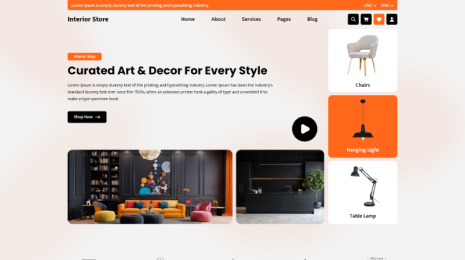
Introduction
Do you want your online business site to organically rank at the top of the Google Search engine results?
What a question it is.
Of course, every website owner would feel great if their website gets placed on the top of SE. Who will be disappointed if their site gets millions of hits consistently and increases the count of visitors on their site?
That’s the only competition running in the recent digital world to obtain a first rank on the list of search engine results and be the first to get clicked by millions of users. To achieve this goal, you can have a number of strategies emerging in the market and implementing to grow your business.To sustain the competitive era and commercial sector, you can see a newer strategy coming into existence and implementing immediately. Optimization is one of the most effective strategies that can grow your trade related to any industry.
Today, we will be discussing the Best Blog Structure for SEO to optimize your blog. So if you are a blogger or want to start blogging for your business website, you must try a specific plan to write and publish your post so that it can get a top position on search engines. So let’s try to gain detailed knowledge and learn how to optimize a blog with the Best Blog Structure for SEO. Prior to that, we will start our journey with the primary information.
What is meant by SEO?
As we all know SEO is an abbreviation for Search Engine Optimization. It is an array of techniques and approaches meant to raise a website’s or a set of webpages' exposure and ranking in search engine results pages. The main objective of search engine optimization (SEO) is to draw more natural (unpaid) visitors to a website by improving its visibility on search engines such as Google and Bing.
How does blogging improve search engine optimization?
Blogging can improve Search Engine Optimization(SEO) in several ways.
- Fresh Content: Search engines like Google prefer fresh and updated content. Blogging allows you to regularly publish new content, which signals to search engines that your website is active and relevant. This can lead to more frequent indexing of your site and better rankings in search results.
- Targeted Keywords: Blogging gives you an opportunity to create content around specific keywords and topics relevant to your industry or niche. By strategically incorporating these keywords into your blog posts, you can improve your website’s visibility in search results for those terms.
- Internal and External Links: Blogging allows you to create internal links within your website, which can improve the overall structure and navigation of your site. Additionally, when you create high-quality blog content, other websites may link to it, increasing the number of inbound links to your site. Both internal and external links are important ranking factors in SEO.
- Expertise and Authority: regular blogging can establish your website as an authoritative source of information on your industry. This can build trust with your audience and signal to search engines that your content is valuable and reliable. Search engines often prioritize authoritative sites in their rankings.
- Long-Tail Keywords: Blogging allows you to target long-tail keywords, which are more specific and less competitive than keywords. Long-tail keywords can attract a more targeted audience and help you rank for niche topics within your industry.
- User Engagement: Engaging informative, and well-structured blog posts can keep visitors on your site longer, reduce bounce rates, and improve the user experience. Search engines consider user engagement metrics when determining the quality and relevance of a website.
- Social Sharing: Blog content is often shared on social media platforms, increasing its visibility and potentially bringing more traffic to your website. Likes, shares, and comments are examples of social signals that might have an indirect effect on your SEO.
- Mobile Optimization: May users access websites through mobile devices, and search engines like Google consider mobile-friendliness a ranking factor. By ensuring that your blog content is mobile-responsive, you can enhance your SEO.
- Rich Media: Blogs can incorporate various forms of rich media, such as images, videos, infographics, and interactive elements. These can make your content more engaging and sharable, further enhancing your SEO efforts.
- On-Page SEO: Blogging provides opportunities to optimize on-page elements like titles, headings, meta descriptions, and image alt tags. Properly optimizing these elements can help search engines understand the content of your pages and rank them accordingly.
While blogging can be a valuable part of your strong SEO strategy, it is essential to produce high-quality, relevant content that genuinely benefits your audience. Consistency, quality, and relevance are key factors in achieving SEO success through blogging.
How to Optimize Your Blog with the Best Blog Structure for SEO
Organizing content in a blog is an art. You need to follow a proper plan to arrange your content. Here we are issuing the Best Blog Structure for SEO.
Optimizing your Best Blog Structure for SEO is essential to improve your website’s visibility in search engine results and attract more organic traffic. A well-structured blog makes it easier for search engines to understand your content and for readers to navigate your site. Here is a step-by-step guide on how to optimize your blog with the Best Blog Structure for SEO.
1. Identify the type of target audience for your blog

The target audience comprises aspiring bloggers, digital marketers, and website owners keen on optimizing their content for search engines. They seek practical insights and strategies to improve their blog's visibility and reach online. This audience values actionable tips and techniques for effective SEO implementation.
2. Perform Keyword Research
Keyword research is a pivotal aspect of optimizing blog content for search engines. It involves identifying the most relevant and frequently searched terms related to the blog's topic. By incorporating these keywords strategically into the content, headings, and meta tags, you enhance the blog's visibility and increase its chances of ranking higher in search engine results pages (SERPs). This step is essential in crafting a blog structure that effectively targets and engages the intended audience.
3. Select a clear and specific topic

When crafting a blog post, it's crucial to center it around a specific, clearly defined topic or keyword. This practice serves dual purposes: it aids search engines in accurately comprehending the content, and it facilitates a seamless experience for readers seeking relevant information. By honing in on a singular subject, you provide clarity and coherence, enhancing the overall user experience. This approach also enables search engines to index and rank your content more effectively, ultimately driving more organic traffic to your blog. In essence, a well-defined focus is a cornerstone of effective content creation.
4. Generate high-quality content
Choosing the right blog structure is pivotal for a successful SEO strategy. A well-organized layout not only enhances the user experience but also helps search engines better understand and index your content. Start with a clear title and introduction, followed by engaging subheadings that break down your topic. Incorporate relevant keywords naturally and use internal links to guide readers to related content. Additionally, prioritize mobile responsiveness and fast loading times to cater to a wider audience. By adopting these practices, you'll boost your blog's visibility and credibility in the digital landscape.
5. Use SEO-Friendly URLs

When it comes to crafting effective URLs for your blog posts, it's crucial to keep them concise, yet informative. A well-structured URL should provide a clear indication of the content's subject matter while incorporating relevant keywords. By avoiding generic combinations of numbers and symbols, you enhance both user experience and search engine optimization (SEO). Short, descriptive URLs not only make it easier for visitors to understand the content they're about to engage with but also signal to search engines what the page is about, ultimately boosting its chances of ranking higher in search results.
6. Optimize Meta Titles and Descriptions
Meta titles and descriptions play a pivotal role in optimizing your blog for search engine visibility. Crafting compelling meta titles and descriptions that incorporate your target keyword is crucial. These elements are what users first encounter in search results, making them powerful levers for driving click-through rates. A well-crafted title and description not only convey relevance but also entice users to click through to your blog. This is especially vital when considering the best blog structure for SEO. An effective title and description can significantly enhance your blog's discoverability and overall performance in search rankings.
7. Header Tags
In relevance to the best blog structure for SEO, utilizing header tags (H1, H2, H3) is of paramount importance. The H1 tag, which should ideally contain the main keyword, serves as the anchor that defines the central topic of the post. Subheadings, represented by H2 and H3 tags, play a crucial role in establishing a clear hierarchy within your content. They not only enhance the readability of your blog but also provide search engines with valuable cues on the content's structure and relevance, ultimately contributing to improved search engine rankings.
8. Internal Linking
In addition to creating valuable content, incorporating internal links within your blog posts is crucial for optimizing your site's SEO. By strategically linking to other relevant articles on your website, you not only improve your site's navigational structure but also provide readers with additional resources to explore. This not only enhances their user experience but also encourages them to spend more time on your site. Moreover, search engines like Google consider internal linking as a positive signal, potentially boosting your site's visibility in the search results.
9. Images and Alt Text
Use relevant images to enhance your content. Include descriptive alt text for each image, incorporating keywords where appropriate. To enhance your content for SEO, consider including relevant images with descriptive alt text. Alt text provides context to search engines about the content of the image. For example, if you're discussing the best blog structure for SEO, you might include an image of a well-organized blog layout with alt text like "Optimized Blog Structure for SEO". This not only aids accessibility but also improves image SEO.
10. Mobile-Friendly Design
Having a responsive design is crucial for a blog's SEO performance. A responsive design ensures that your blog looks and functions well on all devices, including mobile phones and tablets. This is important because Google prioritizes mobile-friendly websites in its search rankings. A mobile-optimized blog provides a better user experience, reducing bounce rates and increasing user engagement. Additionally, it helps in improving page loading speed, another important factor in SEO. Therefore, incorporating a responsive design is a key element in creating the best blog structure for SEO.
Conclusion
In the end, when you read these guidelines, you must have imagined the proper and the Best Blog Structure for SEO to create a well-managed and concise blog that can have the potential to hold on and engage the audience for a long. Utilizing premium WordPress themes can further enhance the visual appeal and functionality of your blog. You shouldn’t forget that SEO is a consistent process. Regularly access and refine your blog structure and content to adapt to changing search engine algorithms and user preferences. By following these steps and staying committed to providing valuable content, you can optimize your blog for SEO and improve your search engine rankings.





